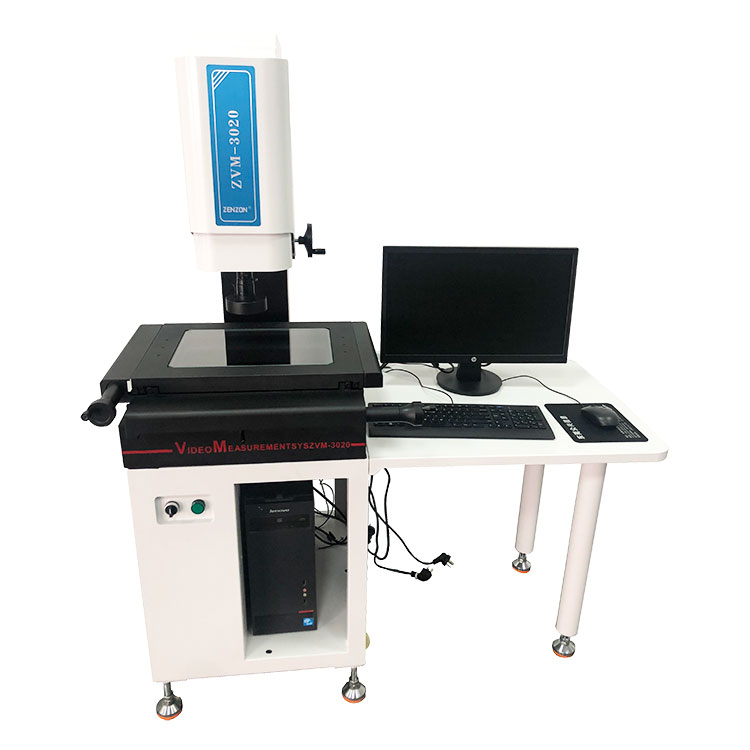Understanding the Difference: Manual Video Measuring Machines vs. Coordinate Measuring Machines
2024-03-20
In the world of precision measurement, two stalwarts stand out: manual video measuring machines and coordinate measuring machines (CMMs). While both serve the vital purpose of ensuring accuracy in manufacturing processes, they differ significantly in their technology, capabilities, and applications. Let's explore the distinctions between these two types of measurement equipment to gain a deeper understanding of their respective strengths and limitations.
Manual Video Measuring Machines:
Manual video measuring machines, as the name suggests, rely on video imaging technology to capture measurements of objects or components. These machines typically feature a camera system, a precision stage for positioning the object, and software for analyzing images and extracting dimensional data. Here are some key characteristics of manual video measuring machines:
1. Ease of Use: One of the primary advantages of manual video measuring machines is their simplicity and ease of use. Operators can visually inspect the object being measured and manually position it on the stage for analysis. This intuitive workflow makes manual video measuring machines accessible to a wide range of users, from technicians to engineers.
2. Non-contact Measurement: Manual video measuring machines employ non-contact measurement techniques, which means they do not physically touch the object being measured. Instead, they use optical imaging to capture detailed images, allowing for precise measurements without the risk of damaging delicate or sensitive components.
3. Versatility: Manual video measuring machines are highly versatile and can measure a wide range of objects, from small electronic components to large mechanical parts. They excel at capturing detailed surface features, contours, and dimensions, making them ideal for applications where visual inspection is critical.
4. Speed and Efficiency: Due to their intuitive operation and non-contact measurement capabilities, manual video measuring machines offer rapid measurement turnaround times. Operators can quickly capture multiple measurements and analyze them in real-time, facilitating efficient quality control and inspection processes.
Coordinate Measuring Machines (CMMs):
Coordinate measuring machines (CMMs) are precision measurement devices that use a probe attached to a moving arm or gantry to capture dimensional data. These machines are widely used in manufacturing environments for inspecting complex geometries and tight tolerances. Here are some key characteristics of CMMs:
1. Contact Measurement: Unlike manual video measuring machines, CMMs rely on contact measurement techniques, where a probe physically touches the surface of the object to capture dimensional data. This method allows for highly accurate measurements of intricate features and complex geometries.
2. Automated Operation: CMMs are typically equipped with automated probing systems and computer-controlled movements, allowing for precise and repeatable measurements with minimal operator intervention. This automation enables CMMs to handle high-volume inspection tasks with efficiency and reliability.
3. 3D Measurement Capabilities: CMMs excel at capturing three-dimensional (3D) measurements of complex parts and assemblies. By moving the probe along multiple axes, CMMs can capture detailed surface profiles, hole patterns, and geometric features, providing comprehensive dimensional data for analysis.
4. High Accuracy and Repeatability: CMMs are renowned for their exceptional accuracy and repeatability, making them indispensable tools for critical quality control applications. Manufacturers rely on CMMs to ensure that components meet precise dimensional specifications and comply with strict tolerances.
In summary, while both manual video measuring machines and coordinate measuring machines serve essential roles in manufacturing and quality control, they differ in their technology, capabilities, and applications. Manual video measuring machines offer ease of use, versatility, and non-contact measurement capabilities, making them ideal for visual inspection and rapid measurement tasks. On the other hand, coordinate measuring machines excel at high-precision contact measurement, automated operation, and capturing detailed 3D dimensional data, making them indispensable for inspecting complex geometries and tight tolerances. By understanding the differences between these two types of measurement equipment, manufacturers can choose the right tool for the job and ensure the highest levels of accuracy and efficiency in their operations.



